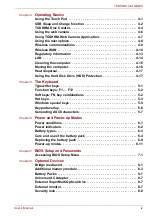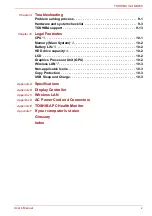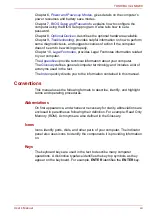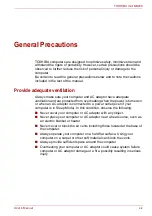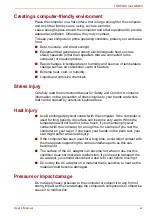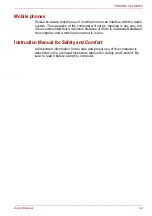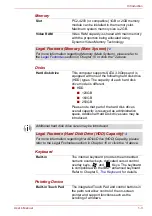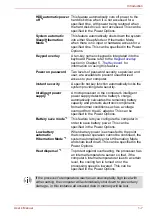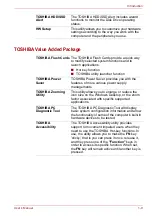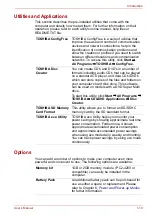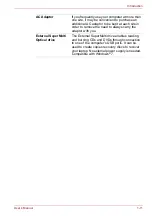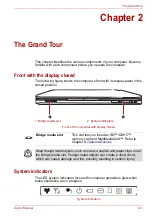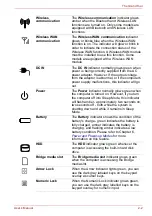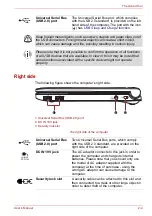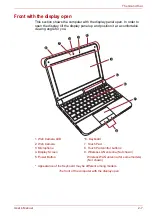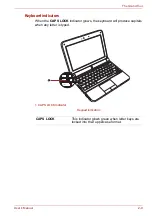
User’s Manual
1-5
Introduction
Communications
Web Camera
Web Camera
is a device that allows you to
record video or take photographs with your
computer. You can use it for video chatting or
video conferences using a communication tool
such as
Windows Live Messenger
.
TOSHIBA
Web Camera Application
will help you to add
various video effects to your video or
photograph.
Headphone jack
This jack lets you connect speakers or a stereo
headphone. When you connect a digital speaker
or headphones, the internal speaker is
automatically disabled.
Microphone jack
A 3.5mm mini microphone jack enables
connection of a three-conductor mini jack for
stereo microphone input, and connection of a
stereo device for audio input.
LAN
The computer has built-in support for Ethernet
LAN (10 megabits per second, 10BASE-T) and
Fast Ethernet LAN (100 megabits per second,
100BASE-TX).
Bluetooth™
Some models are equipped with Bluetooth
wireless communication function which
eliminates the need for cables between
electronic devices such as computers and
printers and mobile phones. When it is enabled,
Bluetooth provides the wireless personal area
network environment which is safe and
trustworthy, that is quick and easy to use.
Wireless LAN
Some computers in this series are equipped with
a Wireless LAN module that is compatible with
other LAN systems based on Direct Sequence
Spread Spectrum/Orthogonal Frequency Division
Multiplexing radio technology that complies with
the IEEE 802.11 Standard.
■
The transmission speed over the wireless LAN, and the distance over
which the wireless LAN can reach, may vary depending on
surrounding electromagnetic environment, obstacles, access point
design and configuration, client design and software/hardware
configurations. The transmission rate described is the theoretical
maximum speed as specified under the appropriate standard - the
actual transmission speed will be lower than the theoretical maximum
speed.
■
To enable or disable wireless communication, use the Hot Key
FN
+
F8
. For more information see the
section in Chapter 5.



